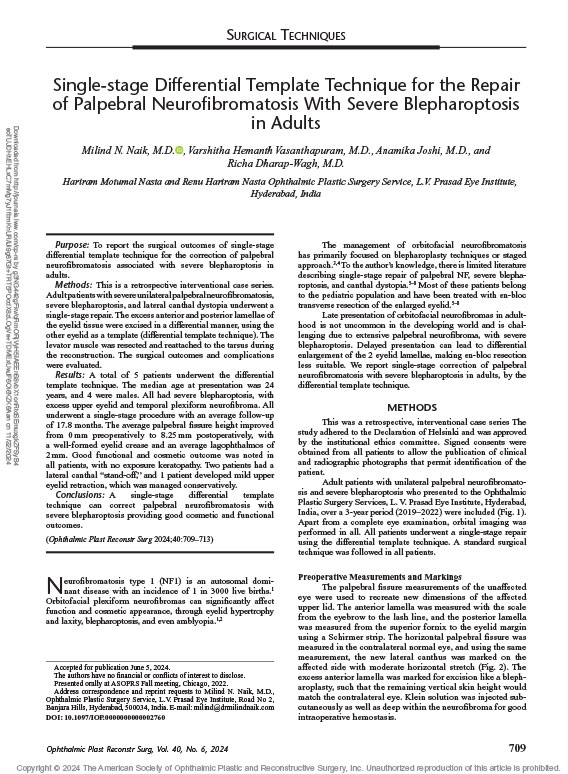Single-stage Differential Template Technique for the Repair of Palpebral Neurofibromatosis With Severe Blepharoptosis in Adults
November 2024
Abstract
Purpose: To report the surgical outcomes of single-stage differential template technique for the correction of palpebral neurofibromatosis associated with severe blepharoptosis in adults.
Methods: This is a retrospective interventional case series. Adult patients with severe unilateral palpebral neurofibromatosis, severe blepharoptosis, and lateral canthal dystopia underwent a single-stage repair. The excess anterior and posterior lamellae of the eyelid tissue were excised in a differential manner, using the other eyelid as a template (differential template technique). The levator muscle was resected and reattached to the tarsus during the reconstruction. The surgical outcomes and complications were evaluated.
Results: A total of 5 patients underwent the differential template technique. The median age at presentation was 24 years, and 4 were males. All had severe blepharoptosis, with excess upper eyelid and temporal plexiform neurofibroma. All underwent a single-stage procedure with an average follow-up of 17.8 months. The average palpebral fissure height improved from 0 mm preoperatively to 8.25 mm postoperatively, with a well-formed eyelid crease and an average lagophthalmos of 2 mm. Good functional and cosmetic outcome was noted in all patients, with no exposure keratopathy. Two patients had a lateral canthal “stand-off,” and 1 patient developed mild upper eyelid retraction, which was managed conservatively.
Conclusions: A single-stage differential template technique can correct palpebral neurofibromatosis with severe blepharoptosis providing good cosmetic and functional outcomes.

